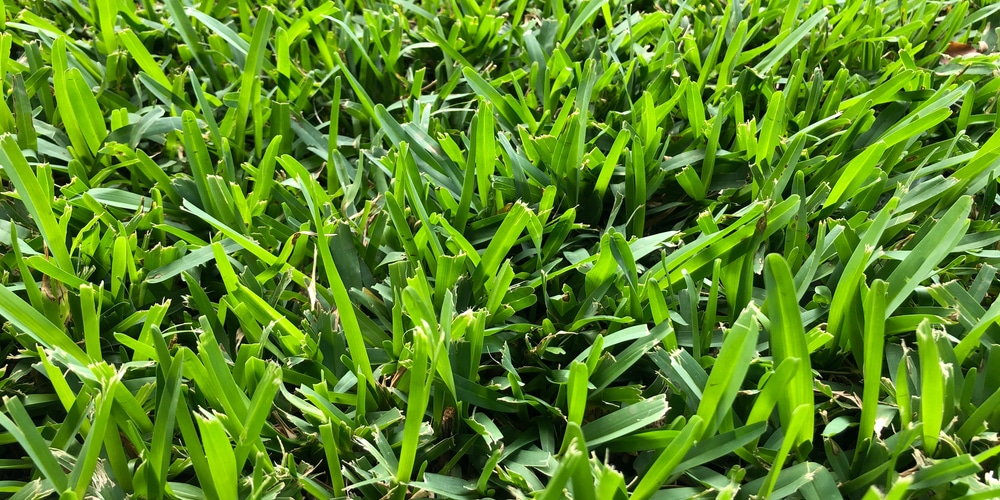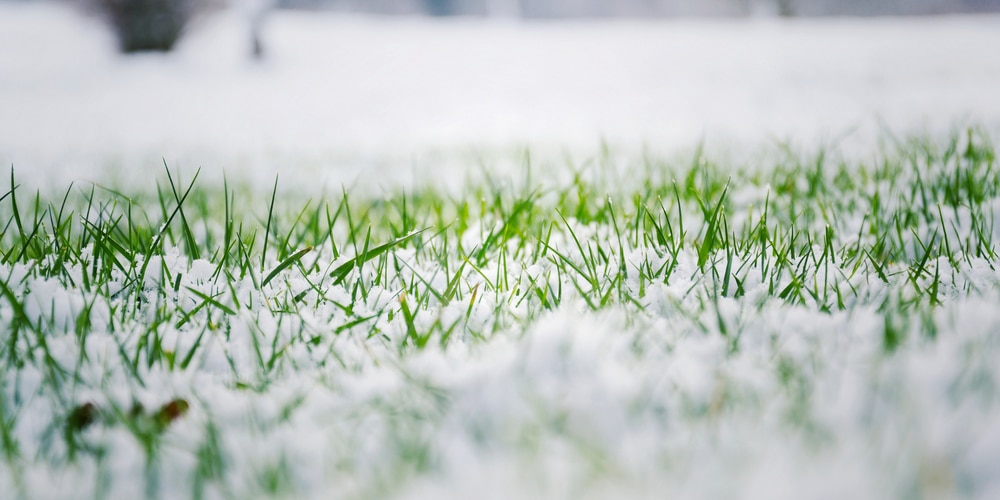St Augustine grass is a warm-season turfgrass that typically grows in U.S. Department of Agriculture plant hardiness Zones 8B through 10A. On average, St. Augustine grass requires between one to three fertilizer applications per year, but fertilizing this type of grass in the winter is usually unnecessary. Fertilizer should only be applied during the active growing season, which is between March and September. Your lawn will absorb nutrients most effectively while it’s growing.
As St. Augustine is a warm-season grass, it becomes dormant in the winter months and, depending on the climate where you live, will discolor slightly or turn completely yellow. Let’s look at when to fertilize your St. Augustine lawn and answer the question, ‘should you fertilize St Augustine grass in winter?’
When to fertilize St Augustine grass?
You don’t need to fertilize a St Augustine lawn in the winter months between February and December. St Augustine is a warm-season grass that will become dormant during the winter and doesn’t need to be fed at this time. It should also be noted that applying too much fertilizer can do more harm than good. Overfertilization may cause root burn and brown patches throughout your lawn.
You can fertilize your St Augustine lawn for the first time in the early spring when the grass begins to turn green. Then space out fertilization until the end of August. Most gardeners recommend that grass is fertilized between 2 and 4 times annually during the growing season.
During this period, grass plants store energy in their crowns for regrowth over summer. Fertilizing in the spring will encourage growth before hot weather sets in. The nutrients from a well-balanced fertilizer will help stimulate healthy grasses and promote strong root development that prepares them for the summer heat.
Aerating and dethatching should also be considered when performing turf maintenance on St Augustine grass lawns during the fall and early winter. This allows oxygen, water, and nutrients deeper into the soil needed by your lawn roots.
Why shouldn’t St. Augustine grass be Fertilized in the Winter?
While St. Augustine grass has deep green color and medium to fine texture during the summer months, it tends to be coarse, brown, or straw-colored throughout the winter months. Because of this, many people choose to fertilize their St. Augustine lawns in late fall with nitrogen-rich slow-release fertilizer blends for greening up the grass before cooler fall temperatures arrive.
However, you shouldn’t fertilize your St. Augustine lawn in the winter, as the grass will become dormant. There will be no benefit to fertilizing in winter, and fertilizer won’t help keep your grass green. The weather and climate, rather than lack of nutrients, cause St Augustine to turn yellow or brown in the fall and winter. There is also an increased risk of lawn burn when fertilizing in the late fall or winter.
Should you Fertilize St Augustine Grass in the Fall?
In the southern states, where the weather is warmer in the winter months, you’ll notice that your St. Augustine lawn has a longer growing season and doesn’t become dormant in the winter. In warmer areas, you can apply an additional application of fertilizer in the fall. This will help keep the grass healthy, and it will be more likely to stay green during the winter.
What type of fertilizer should I use on a St Augustine lawn?
Augustine grass should be fertilized with nitrogen-rich fertilizer in early spring when it begins to green up, typically around March or April. Nitrogen helps fuel plant growth and promotes lush, vibrant color. Lawn fertilizers also contain phosphorus which is excellent for grasses root development. You can use a 16-4-8 liquid fertilizer or slow-release fertilizer on your lawn. Always follow the manufacturer’s instructions when using fertilizers.
Conclusion
Fertilizing your St Augustine grass in the winter months is not recommended. There is an increased risk of lawn burn when fertilizing in the late fall or winter. Fertilizing your lawn regularly in the growing season will help it to look green and lush. The grasses’ health will also be improved, making your lawn more likely to survive the winter and may even stay green in some climates.


